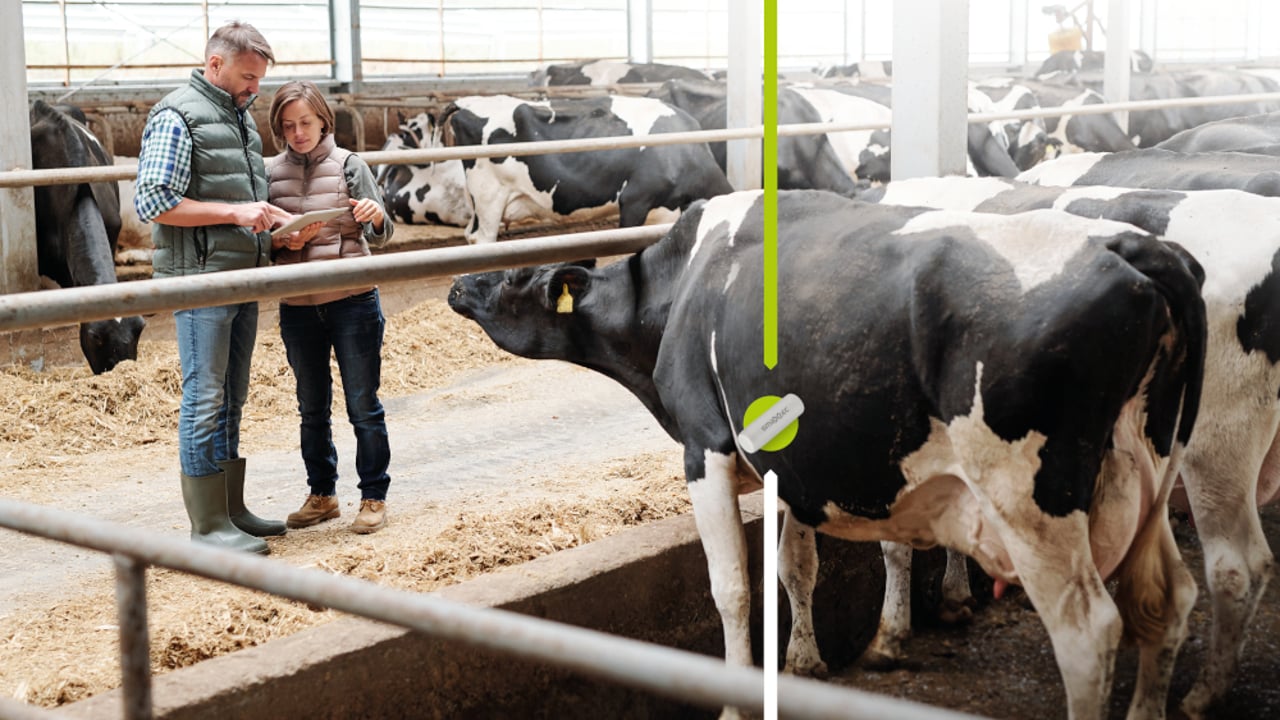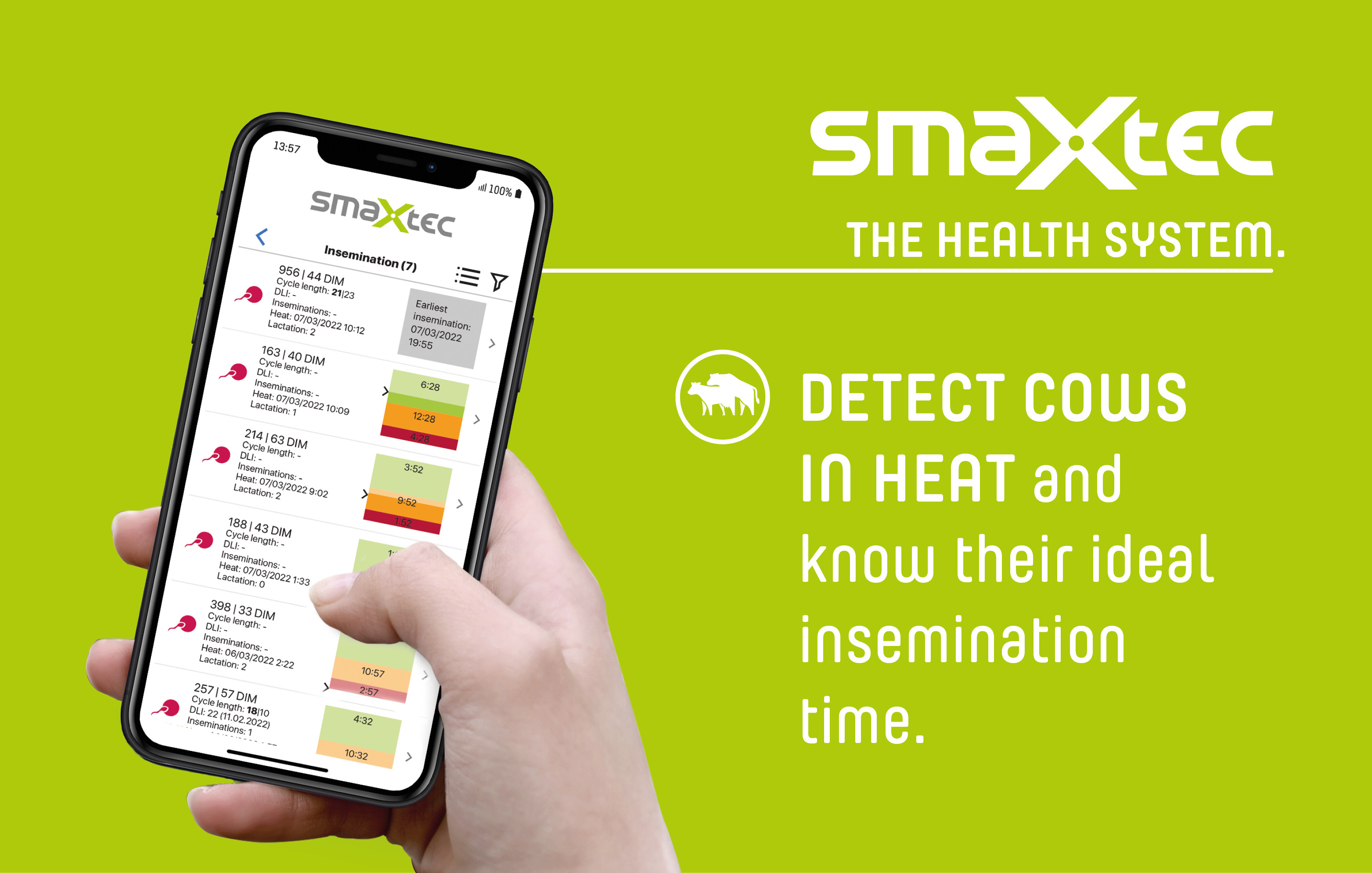Sponsored Article

Sponsored Article
Increasing fertility with accurate heat detection via your phone
Sponsored Article

Based on highly precise measurements of a cow’s crucial individual parameters, smaXtec provides reliable heat detection and the optimal insemination timing, taking the guesswork out of breeding cows.
Detecting heats and inseminating cows at the right time is critical to the economic success of dairy farms and to improving overall herd health and productivity. However, visual oestrus detection requires many factors to be considered and is very time-consuming.
With smaXtec, intensive visual observation by the farmer is no longer necessary.
The system sends a notification to the smartphone or PC as soon as cows are in heat, allowing farmers to:
- Improve their heat detection rate;
- Reduce the calving intervals;
- Improve their services per conception;
- Use the best genetics with greater confidence;
- Identify cows with fertility problems;
- Detect open cows that have been confirmed pregnant.
With its unique bolus technology, smaXtec is much more than a traditional heat detection system.
Thanks to the unique position of the smaXtec bolus and the highly accurate measurement of inner body temperature, drinking behaviour, rumination and activity, the system provides unrivalled data from inside the cow.
This allows the best possible monitoring of herd health and reproduction, enabling farmers to improve animal health and profitability.
When farmers observe their cows visually, it can often lead to missed heats, especially for cows that do not show typical external signs.
With smaXtec's highly accurate heat detection, farmers can be confident that the cows can be served at the right time.
As every missed heat is a cost factor, farmers can significantly increase insemination success while reducing hormone use and labour. Not only does smaXtec detect cows in heat, but it also indicates the optimal insemination time.
This results in a higher conception rate, better calving index and, ultimately, improved fertility.
The system is constantly evolving. One of the latest additional features is the abort detection, which identifies pregnant animals with a conspicuous oestrus-like cycle.
These cows are placed on a list for a repeat pregnancy check to avoid cows with undetected abort falling out of lactation. By detecting aborts early, farmers can get the cows back into calf sooner.
When it comes to calving, smaXtec also offers great support: The system sends an alarm on average 15 hours in advance.
This allows farmers to make necessary preparations for calving, support the cow if necessary and ensure a smooth calving process.
Thanks to continuous health monitoring, any signs of metabolic disorders are detected and diseases like milk fever can often be completely avoided by treating cows immediately (i.e. with calcium) - for a good start to a healthy and successful lactation.
Using smaXtec, farmers have access to insights on an individual animal and herd level information around the clock and that pays off: Customers report that they have achieved higher fertility rates and shorter calving intervals as a result of the system.
In addition, they see a reduction of up to 25% in the number of open days in their herd and a significant reduction in the age at first calving.
For more success stories of smaXtec customers from all over the world, click here.
Early detection of diseases and improving overall herd health is equally as important and a key factor of reproductive success on any dairy farm.
By measuring cow health data continuously and precisely, smaXtec offers an outstanding system for early disease detection, allowing for the earliest possible intervention when necessary, reducing the risk of serious disease progression and significantly lowering the use of medications.
smaXtec enables farmers to manage their herds in a proactive rather than reactive way. This way they ensure consistently high milk yields and profitability, while reducing costs, workload and stress.
For more information on the smaXtec system, click here.
Sponsored Article








